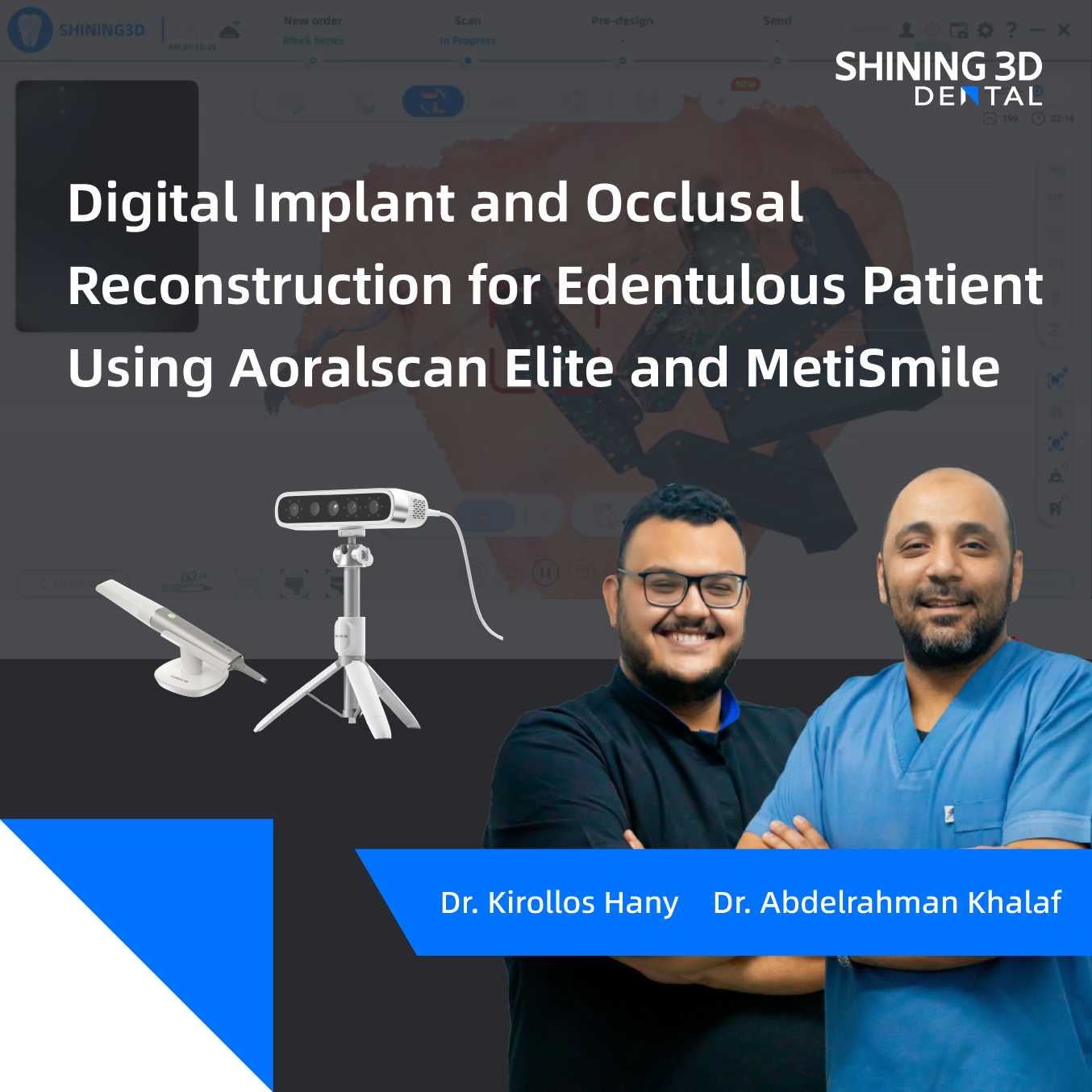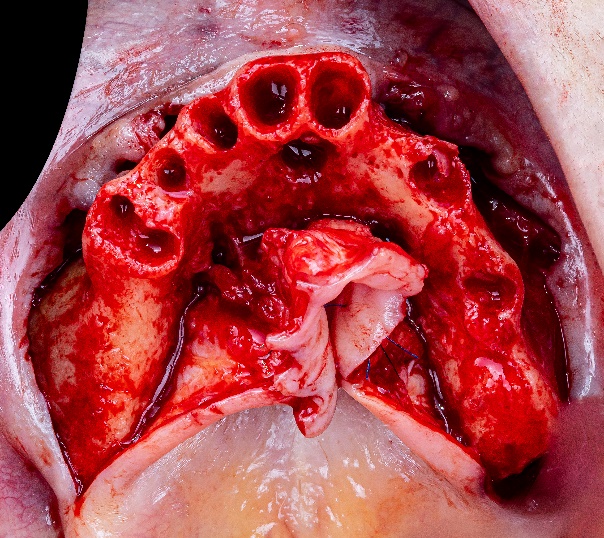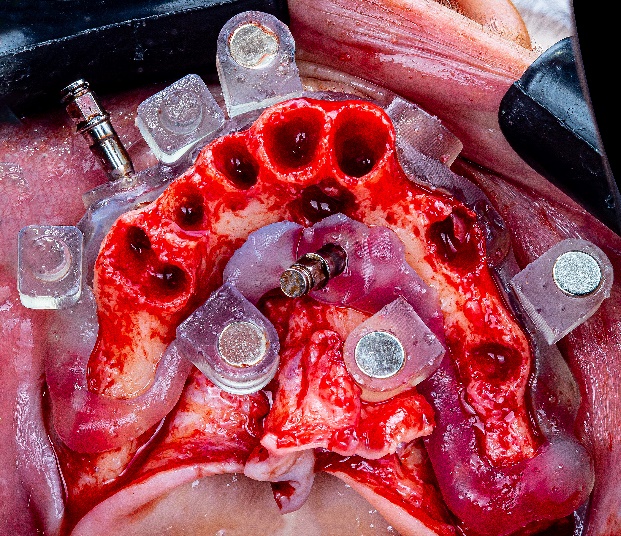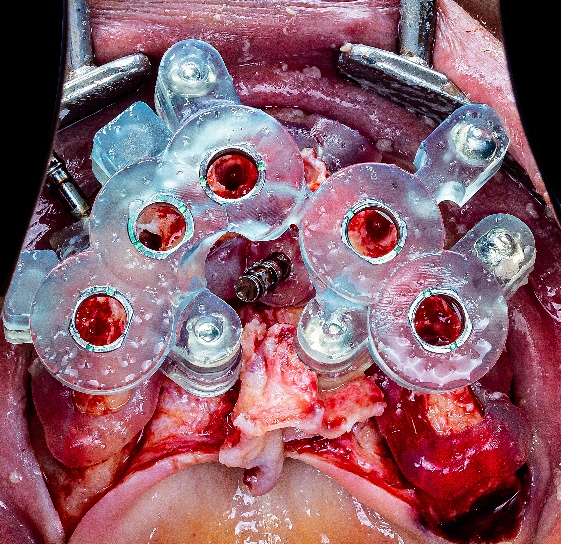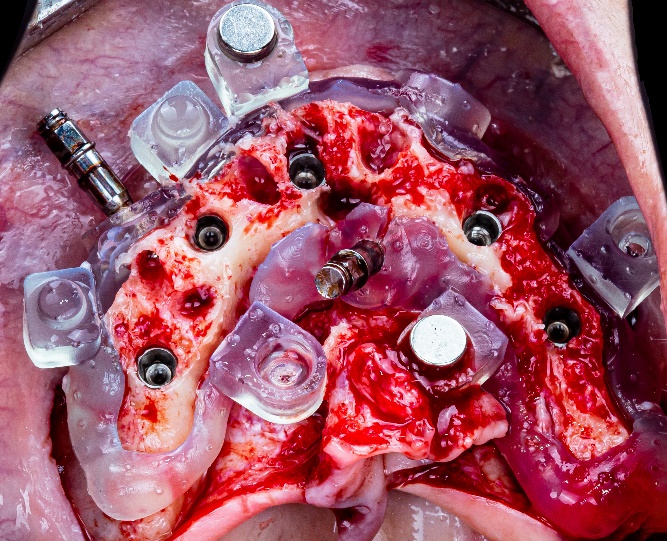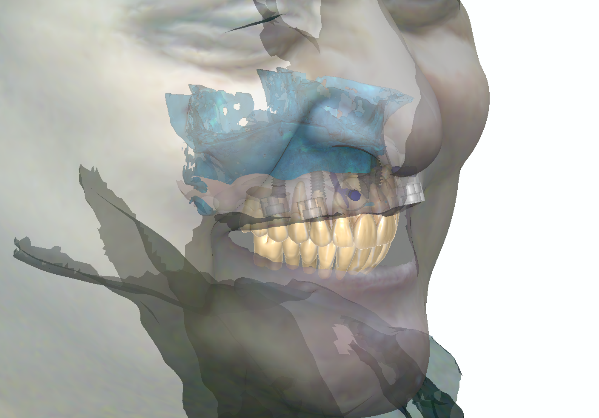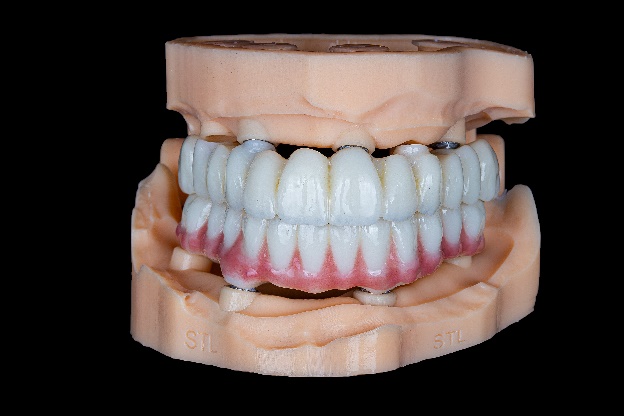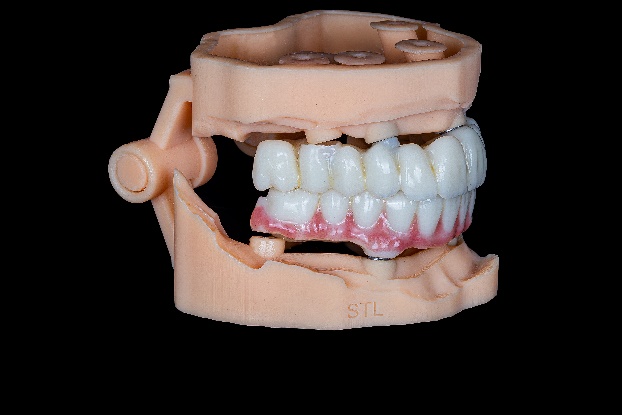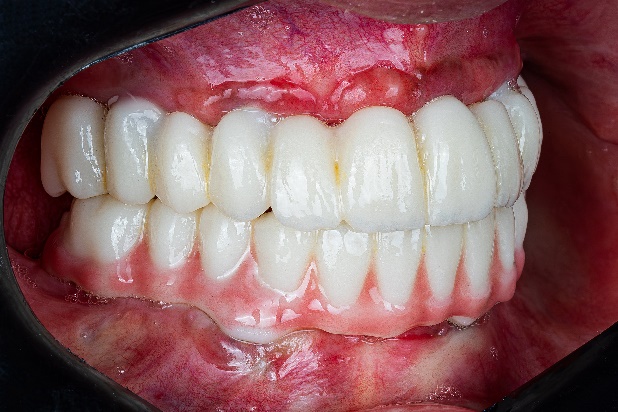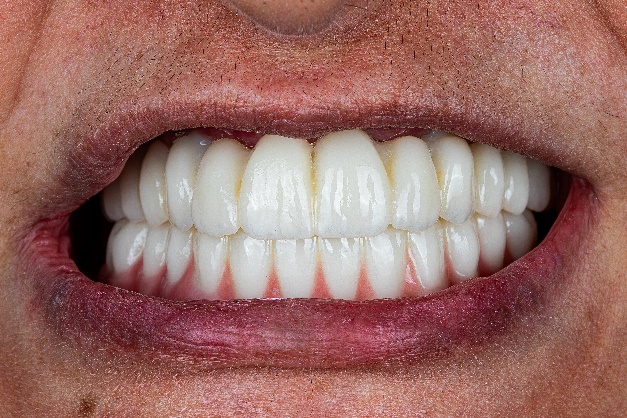Since the launch of the Aoralscan Elite, more and more dentists have recognized its power in all-on-X implant cases. They use it to achieve a passive fit for restorations, even in the most complex treatments.
Today’s case comes from Dr. Abdelrahman Khalaf and Dr. Kirollos Hany (Fig. 1), who designed the Stack Guidance, a two-part system with one guide for bone cutting and another for implant positioning. With the Aoralscan Elite’s intraoral photogrammetry technology, they achieved a passive fit and a highly satisfactory treatment outcome.

Case Profile
The patient is a 55-year-old female who has been missing most of her teeth for many years (Fig 2). She is concerned about the discomfort of wearing removable dentures and has requested an implant-based restoration.
Clinical examination revealed:
- Significant bone resorption in the posterior maxillary alveolar ridge
- Unstable occlusal relationship
- Reduced lower third of the face
Given these conditions, a comprehensive treatment plan will be necessary to restore function, aesthetics, and occlusal stability.
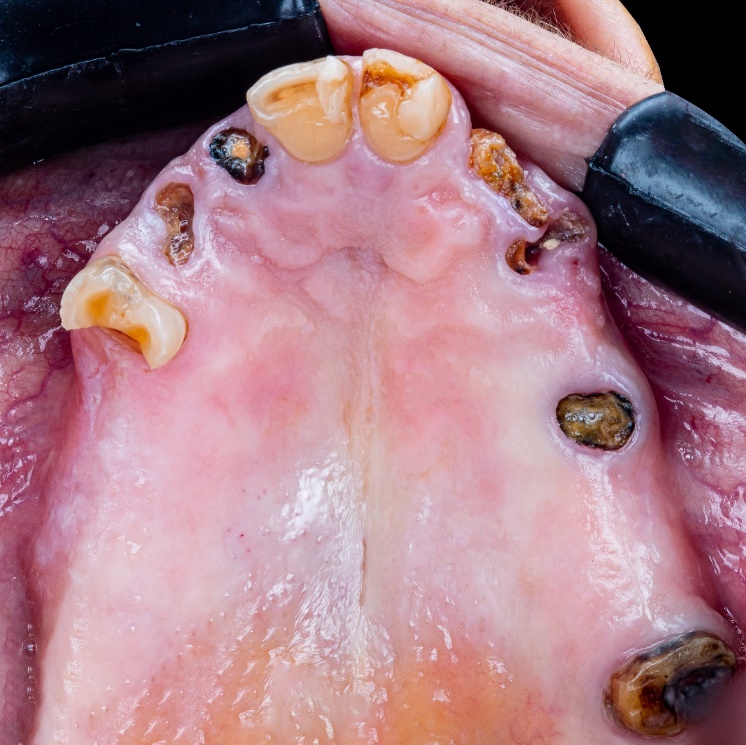
Treatment Process
Data Collection
Obtaining the necessary and comprehensive data for a detailed analysis is the first step in the treatment. The Aoralscan Elite enables fast and precise 3D capture of intraoral data, eliminating the discomfort and inaccuracies associated with traditional impression materials. This improves both the precision and comfort of the final restoration. Meanwhile, the facial scanner MetiSmile collects 3D facial data, including facial contours and lip-tooth relationships, providing valuable references for designing a more aesthetically pleasing and natural restoration. CBCT is used to obtain 3D data of the patient’s jawbone, with all these information, users can establish a virtual patient for better design process.
Stack Surgical Guide Design and Fabricate
The CBCT data, facial scan data, intraoral scan data are imported into the implant planning software for 3D reconstruction and data analysis. Based on the patient’s oral condition and facial characteristics, the implant positions, depths, and angles are carefully planned. In this case, due to severe alveolar bone resorption in the posterior maxillary region, a stack surgical guide is required (Fig 3, 4, 5, 6). Additionally, an osteotomy guide is necessary in the anterior region to level the excessively prominent bone. The implant surgery process and restorative outcome are simulated using the software, allowing for effective communication with the patient to confirm the treatment plan.
According to the digital treatment plan, the AccuFab-D1s 3D printer is used to fabricate a surgical guide that includes positional information for all implants. This guide significantly enhances accuracy and safety, minimizes surgical trauma, and reduces overall treatment time.
Implant Surgery
With the surgical guide in place, the implant placement surgery was completed with precision and proceeded smoothly (Fig 7, 8, 9, 10)
Restoration Design
Once the implants had successfully integrated with the bone, we need to accurately capture the implant positions and soft tissue morphology.
Since this case involves all-on-X implant restoration, achieving a passive fit for the final prosthesis is crucial. To ensure high precision, we utilized Shining 3D’s Aoralscan Elite, which features globally pioneering IPG technology, to capture digital impressions with exceptional accuracy. (Fig 11)

Fig 11: The coded scanbody is installed in the patient’s mouth, and during the scanning process, the Aoralscan Elite utilizes photogrammetry technology to recognize the markers on the coded scanbody, accurately determining the implant positions.
Then we design and create personalized prosthetics based on facial scan data (Fig 12, 13, 14, 15)
Try-in
The prosthesis is tried in, and there is almost no occlusal relationship adjustment. The patient is extremely pleased with the treatment outcome. The prosthesis not only provides an aesthetically pleasing result but also successfully restores occlusal function, reestablishes the lower third of the face, and enhances overall facial harmony (Fig 16, 17, 18, 19) .
Conclusion
The use of IPG technology in implant-supported occlusal reconstruction for edentulous patients boosts restorative precision, streamlines the treatment process, shortens treatment time, and enhances patient comfort and satisfaction. As IPG technology continues to evolve, its adoption in implant-based restorations will grow, taking treatment results to the next level.
Comments from Dr. Abdelrahman Khalaf and Dr. Kirollos Hany
We have been using the Aoralscan Elite for several months since its launch last September, and all of our all-on-X implant cases have been successful with great passive fit. We are extremely excited about the results we’ve achieved with this scanner and look forward to performing even more cases in the future.
 ENG
ENG









